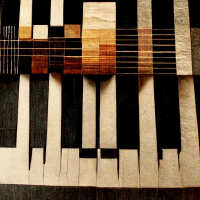Loopy Pro: Create music, your way.
What is Loopy Pro? — Loopy Pro is a powerful, flexible, and intuitive live looper, sampler, clip launcher and DAW for iPhone and iPad. At its core, it allows you to record and layer sounds in real-time to create complex musical arrangements. But it doesn’t stop there—Loopy Pro offers advanced tools to customize your workflow, build dynamic performance setups, and create a seamless connection between instruments, effects, and external gear.
Use it for live looping, sequencing, arranging, mixing, and much more. Whether you're a live performer, a producer, or just experimenting with sound, Loopy Pro helps you take control of your creative process.
Download on the App StoreLoopy Pro is your all-in-one musical toolkit. Try it for free today.
Audio Analysis Tips, Tricks and Thoughts
@Blue_Mangoo got some interesting discussions started about audio analysis techniques with a couple of recent video postings (notably with his compressor shoutout video).
A few of us have been carrying on discussion in those threads. I've started this topic so that we can talk about audio analysis and tools without distracting from the main topics of those other threads.
Most recently, @tja and I have been talking about spectrum analysis tools on iOS and also Audulus patches for generating test signals.



Comments
@tja: so, I made a few discoveries today about both Audulus and SpectrumView.
After quite a bit of testing I discovered that SpectrumView has trouble if you give it a stereo file. I created a couple of sine sweeps with an improved version of my Audulus patch and noticed that when I generated a mono sweep that went to 0 dB, the sweep was clean. A stereo version of the same file showed all those extra harmonics and aliasing. (Note that the mono sweep still sounds wrong when SpectrumView plays it back but the analysis looks clean). I think that SpectrumView may be summing the left and right channels and then performing the analysis.
SpectrumView's playback anomalies are something different. When it plays back the sine sweep (even the "clean" one), it has strange artifacts that you won't hear if you play it back in any other app.
On the Audulus front, I noticed that the low frequencies in my sweep did not have the same amplitude as higher frequencies. Someone on the Audulus forum remarked that using the DAC node for output ensures that Audulus puts out exactly what is calculated. The speaker module that I used actually has a filter on it.
I have created an improved version of the sweep app, and I have made it more convenient for you to customize. I have embedded some nodes inside that you can type into to change the knob range, and I have improved the scaling of the frequency knobs to be more usable.
Here is the improved sweep patch:
Here is the analysis of the mono sweep (amplitude full):
Here is the analysis of the same sweep in stereo (amplitude full):
Thanks a lot
I have like no time and now I will end up reinstalling Audulus and heading down that rabbit hole....
Audulus is a great rabbit hole. When I find some time, I am going to put together a few videos showing fun things one can do with Audulus without knowing how to program it. It is such a fun audio fx toolkit.
Out of curiosity, did you need to lower the gain to get a clean analysis?
@tja: here is an improved version of the sine sweep tool (for Audulus). The amplitude is now set in dB.
I owe a lot of thanks to the folks on the Audulus forum -- one of whom supplied the math for the db calc.
Excellent video @Blue_Mangoo!